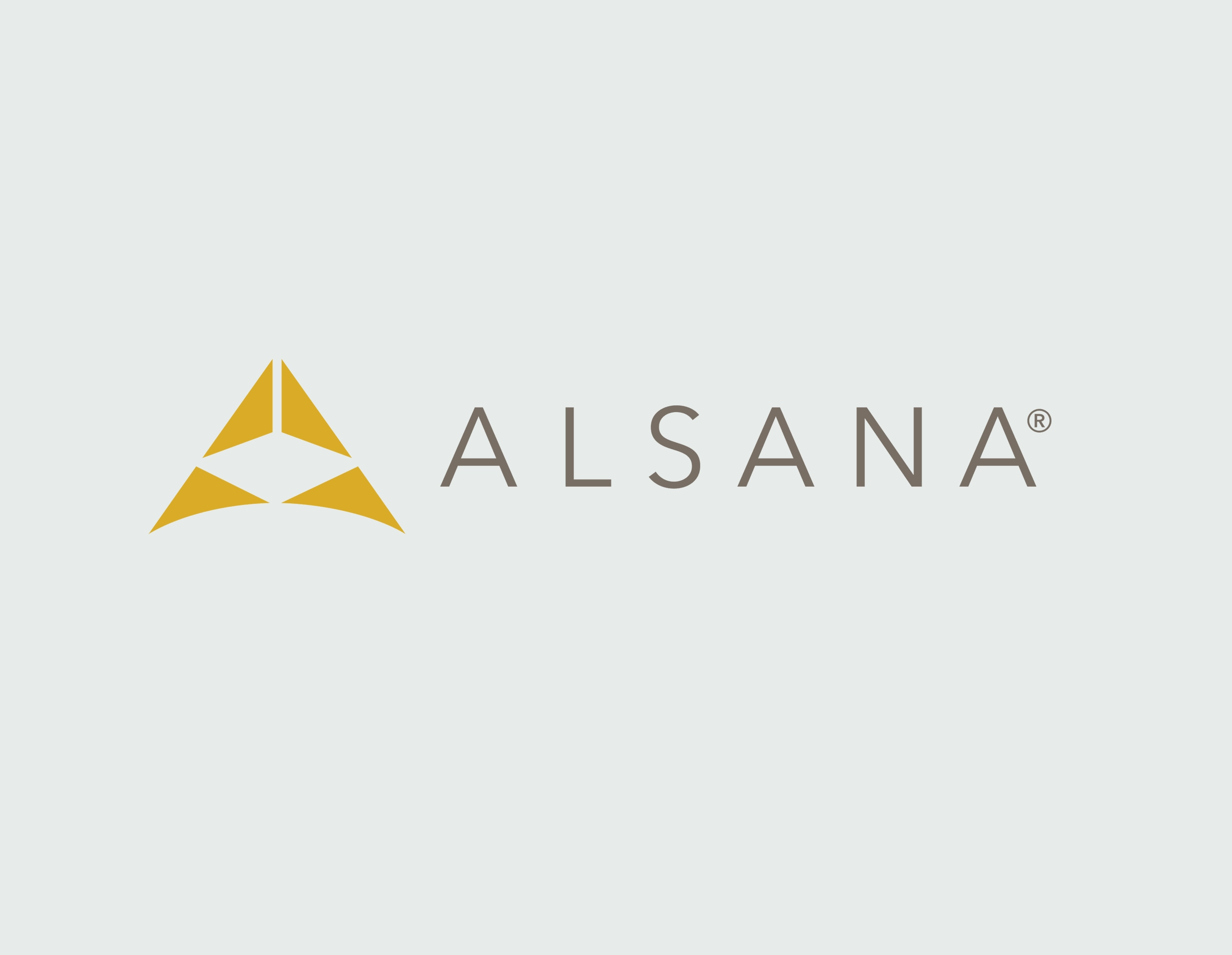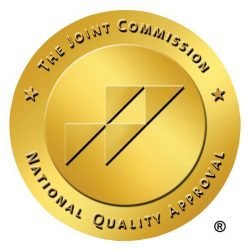Julia Cassidy on Instagram Live with Project Heal
On this Instagram Live, Alsana’s VP of Clinical Nutrition Services, Julia Cassidy, MS, RD, CEDRD-S, joins Project Heal CEO, Rebecca Eyre, to have a conversation around what all-inclusive nutrition means and how to incorporate foods that are enjoyable to the client without shame or judgement.
Watch the Instagram Live
Read The Transcript
REBECCA EYRE, HOST
Hello. My name is Rebecca. I’m the CEO of Project Heal. We’re going to be talking about all-inclusive nutrition today with Julia Cassidy from Alsana. I am really looking forward to this conversation and talking a little bit about how all-inclusive nutrition is different than all foods fit. So, it’s going to be very interesting. It’s been a while since we’ve done any of these lives. It’s nice to see you all popping in. Hi. Hello. Let’s see when she joins. It’s a beautiful spring day in New York. I hope that the sun is shining wherever you are. Hi, Serena. Hello. As I’m waiting for Julia, I’m going to go ahead and read her bio. Julia is the VP of Clinical Nutrition for Alsana and has twenty years experience working in the behavioral health space. She is a certified eating disorder specialist supervisor, certified intuitive eating counselor, and a licensed body positive facilitator. She’s also been involved with the behavioral health nutrition for the past five years and is currently the past Chair Elect. She is one of the coauthors for the Guidebook for Nutrition Treatment of Eating Disorders through the Academy of Eating Disorders, and has presented on various topics related to eating disorders such as how nutrition functions in the brain, intuitive eating, and food exposures, both nationally and internationally. Julia is passionate about helping individuals heal their relationship with food and their body through weight inclusive and all-inclusive nutrition care. I’m super excited about this conversation. Julia, if you’re here, will you go ahead and request to join? I don’t know if I see you. There you are.
JULIA CASSIDY
Good morning.
EYRE
Hello, Julia. How are you?
CASSIDY
Good.
EYRE
So you’re saying good morning. I see you’re on the West Coast.
CASSIDY
Yes, I am on the West Coast so good afternoon.
EYRE
Where are you?
CASSIDY
I’m in Long Beach, California.
EYRE
I was just bragging about the sun in New York.
CASSIDY
It’s been raining the last few days. There’s no sun yet.
EYRE
Amazing. Well, I’m so excited to meet you. This is our first time talking. I’m actually, as an eating disorder therapist myself, who has definitely talked about all foods fitting. I’m really curious and excited to learn more about what all-inclusive means. So, let’s start by talking a little bit more about Alsana, who just joined Project Heal’s Healer Circle. Thank you so much for donating your treatment to our beneficiaries. It really helps and literally saves lives. So, I appreciate your partnership. So, tell us more about Alsana and anything that you all are excited about.
CASSIDY
Well, we have two big projects that we’re working on, not projects, but newer modalities that we’re working with. One in the therapy realm is we’re really focusing on our compassion-focused therapy. Our chief clinical officer, Heather Russo, has done some extensive research and studying in this realm and so all of our clinicians are trained, and we’re now using this as a treatment modality with our clients. And then the biggest or newest thing is our shift in our nutrition philosophy, which is our all-inclusive nutrition philosophy. So a little different than all foods fit.
EYRE
So cool.
CASSIDY
But we’re excited. Yeah.
EYRE
I mean that’s what I’m so interested in. So tell me how it’s different.
CASSIDY
So it’s different in the sense that we really do truly incorporate all foods and we neutralize all foods. I’ve been in the eating disorder world. I’ve been treating eating disorders for twenty years now. And I hate to say this because I am part of this, but as eating disorder clinicians and professionals, we were deeming which foods were good and bad within the all foods fit realm. We started creating our own biases, which foods were diet foods and which foods were eating disorder foods. And we were judging each other on what we were eating. An example, yeah.
EYRE
I have seen that so much.
CASSIDY
An example, I was at an eating disorder marketing dinner. I happened to order salmon salad. It just sounded appeasing. And the clinician blatantly looked at me and said, if you’re an all foods fit dietitian, why are you eating a salad? And I felt like I got punched in the stomach and I was like, Oh, my gosh. And then I was thinking, well, we’re placing those same judgments and biases on our clients. What if our client genuinely really likes salads? Does it always have to be intertwined with the eating disorder? Listen, there’s more to it, but I really feel over the years, we missed the mark under all foods fit. And so this is why I came up with the all-inclusive nutrition, not only to hear our clients out, but I wanted to be more inclusive with what we call trendy, innovative foods. Listen, like in California, cauliflower is like the craze. Cauliflower everything. Instead of that being a hill to die on, why not lean into it and tell my clients totally, you can have that cauliflower crust pizza, and you still need a grain to go to balance out your meal. That doesn’t count as your carbohydrate source. Could care less if you want cauliflower crust pizza or regular crust pizza. You’re eating pizza at the end of the day – that’s a win in an eating disorder recovery. I also got questioned because in my private practice, I have a very small private practice, but I allow my clients – I don’t care if they have the Banza or black bean pasta, high in carbohydrates, high in protein, high in fiber, all of which a healing body needs in eating disorder recovery. We need to heal that microbiome. So why would I say, no, you can’t have these foods? If this is your first step into eating pasta, let’s start there. So I loved bringing this into Alsana, and I was just updating our cycle menu, and I actually added cauliflower mash as one of our side dishes to show our clients we can eat this in a balanced manner and it doesn’t have to be so wrapped up in diet culture. It can just be a side dish.
EYRE
That’s so interesting. I definitely am guilty of that as well. I think growing up in a house with a mother who struggled with anorexia and now treating eating disorders all this time, I genuinely hate going over to people’s houses and seeing these low-calorie alternatives. I’m just like, get out of here. But I totally agree from a meal plan perspective, you will have to eat a larger volume of food. But any food that you want to eat is fine. I think it would be curious. I’d love to hear your thoughts on someone who might have a propensity towards binge eating disorder but is also afraid of gaining weight the way that they might use low calorie or less nutrient dense food alternative products to allow them to eat higher volumes of food to like, sort of mimic a binge type of episode.
CASSIDY
I love that you brought this up because at the end of the day, as clinicians in the eating disorder world, I call us detectives. What’s the intentionality behind the food choice? Is it something you love? Is it something working towards the eating disorder, which in this case it would be. And are you feeling satisfied and satiated from it? And I talked to my clients about our physical versus psychological satisfaction. We have two. And you might be physically satisfied by eating larger volumes of that low-calorie food, but you are not psychologically satisfied because it’s not what you truly want. And how can we slowly bring in the foods that bring that psychological satisfaction, which maybe, I don’t know, full fat ice cream versus halo top ice cream. Do you get the same pleasure and satisfaction? And how can we create a balance and bringing those back in?
EYRE
Well, and especially psychologically, do you get the same pleasure? And part of the point might actually be, I don’t think I deserve the pleasure of that. Or I think there’s a way in which people deliberately deprive themselves of pleasure around food because they don’t trust themselves with the pleasure. And I think that disordered relationship to pleasure can be a big part of eating disorders.
CASSIDY
That’s why I like to bring in the self-compassion and the grace piece into eating disorder recovery. And I don’t have time to really go into all of it. But that is a piece when we’re healing our relationship with food, part of that healing process is identifying what foods, of course, we’re fearful of or have shame around. And how do we start to reconnect with those foods? And how do we in that reconnection, that’s part of the healing process with the body and allowing ourselves to fully enjoy and have that pleasure piece with the food.
EYRE
Amazing. I just want to point out there’s someone in the comments saying that they wouldn’t be alive right now if it wasn’t for the treatment at Alsana.
CASSIDY
I’m going to cry.
EYRE
They shared that they had a really serious struggle with anorexia, but that they have weight restored.
CASSIDY
Thank you so much!
EYRE
Thank you for sharing. That means a lot. So I’m really curious about the nutrition and psychiatry piece. So if you could talk about that.
CASSIDY
As soon as you hear the word nutrition psychiatry in the eating disorder world, people clam up. It can definitely be a controversial topic in this industry. And I love controversy, and I’m going to go there. When I talk about nutrition and psychiatry, I’m really honestly talking about back to the basics of nutrition and the functionality of nutrition. My younger son has ADHD. My mom has Parkinson’s. The company I was working at prior to Alsana, I created their nutrition program for their mental health division and their SUD division. And so in all my research, this theme of nutrition psychiatry kept coming up. And it just sparked this interest because I got into nutrition for the science base, not only for my own history of having an eating disorder, but I really wanted to know why this was happening and how food functions in the body. So this is where I geek out. So the more I was learning about this nutrition psychiatry, I’m like, Wait a minute, by no means are we replacing medicine with food. That is not my intention with the nutrition psychiatry. My intention is to be more intentional with those nutrient rich foods at the beginning of our healing process. So with residential treatment, when somebody comes into res, I’m not going to force pop tarts or whatever those fun foods are, highly palatable foods at the beginning of treatment. We need to heal the gut microbiome in order to heal the brain, and we need to heal the brain in order to heal the whole body and the thought process so we can function in recovery. And so bringing in those nutrient rich foods is going to heal that gut microbiome and the body without demonizing them. So this is my intention of nutrition, psychiatry is just to lean on back to the basics and the functions of nutrition. And we always say we’re a science-based industry, except for some reason in the nutrition world. Let’s lean on the science of nutrition and let those foods heal. In addition, to therapy and in addition to therapy and in addition to medication. But let’s let those foods work and heal in the body. Now, there’s a lot of arguments. People say, Well, it’s going to happen regardless. Yes, and there are some functions of those nutrient rich foods that are going to help the body more effectively and more efficiently than some of those highly palatable foods at the beginning of treatment. And what I’m really talking about is the beginning stages of recovery. And this is regardless of body size. This is regardless of diagnosis. When our eating patterns are disrupted and we’re engaging in disordered eating, then our gut microbiome is also disrupted, and that creates the gut dysbiosis, which then also creates the deficit in our neurotransmitters, which are our food stabilizers. So it’s a full circle. You can’t heal one without healing the other. And I think nutrition is the base body.
EYRE
Yeah. So I’m curious, and kind of a curveball
question here. When I think about the science of nutrition, I am not anywhere close to where you are, but I have been in this space for twelve years and so I’ve heard a lot of things and also live in the United States. And so I have a lot of information about which foods are considered nutritious and/or gut healing. And so what I find really interesting is that the science about this changes all the time. And I’d be really curious, right? We hear, and it’s very, very closely linked to obviously the diet industry, the weight loss industry, and also just food marketing, where you have these trendy foods that everybody’s like, we found the thing that has all the answers in it. And it’s like, and if that is actually changing every five years or so, then is it actually science? I’d be curious if you could speak to how people can maybe tease out the difference between these food fads and things that we actually know that are static and not related to people making a lot of money.
CASSIDY
I love that you bring this up because I just saw, not just, probably a year ago, there was an article on the Time Magazine and how when the low-fat craze was coming out, started back in the 80s, eggs were suddenly a bad food. And then when it was low carb, eggs shifted… Or no, when Atkins was a thing, eggs shifted and eggs were suddenly a good food. And then they were deemed a bad food again. And so if you look at the science, again, you have to see who the sponsors are of the research. If it’s a food industry, I probably wouldn’t trust it as much as I would actual food scientists in the arena. Now, science is always changing, and this is what… Eggs, let me get back to eggs, are probably one of the most nutritious foods you could actually eat. They’re so loaded in nutrients. And yes, there’s cholesterol. That doesn’t mean we’re going to get high cholesterol from the cholesterol in eggs. Yes, there’s dietary fat and your body is going to benefit from those fats just as there’s choline, just as there is the protein piece. There’s so many nutrients. With science always changing, just like therapy, when we’re doing what therapy module is the best, that’s always changing. First, I heard it was NBT, then CBT, then ACT, then now we’re doing CFT. There’s so many acronyms, right? But again, who’s doing the research? What is the most appropriate? When you go back to the basics of nutrition, really go to the basics of nutrition. What is a carbohydrate? What constituents make up of a carbohydrate? And how do those carbohydrates work and function in the body? Now, I’m not talking about diet food. I’m just talking about the idea of what a carbohydrate is. And then breaking a protein down. What is a protein? What are those food sources? What’s the chemical or the organic chemistry molecule of a protein? How does that function in the body? How does that affect? Okay, I’m going to talk a little science. How does the food work in the Krebs cycle? Because our digestion process, everything breaks down to glucose in the body. So if we’re getting back to the basics and the baseline function of nutrition in the body without the industry telling us what’s good or bad. That’s what I like to teach my clients. And this is like, Alsana we focus on fuel groups. We focus on carbohydrates, proteins, fats, and we have produce. These are baseline nutrition terms. And then we teach our clients what foods go into these categories. Your brain and your body is going to benefit from a wide variety of food. I don’t think that’s a secret. But going back to the science, no one food is a superpower. It’s fine if you…
EYRE
And a lot of it has to do with how the foods are combined anyway due to the solubility of different vitamins and minerals.
CASSIDY
Yes. We don’t eat in terms of like… I don’t eat iron. I eat foods containing iron, and I can get iron in a wide variety of foods. I don’t eat – so this is going to sound weird, but I don’t eat just protein. Chicken, beef, eggs, pork, tofu. Yes, they are the main protein source. That’s the main constituent. But there’s other nutrients. There’s B12, there’s the iron, there’s the magnesium, there’s all these other nutrients in some of these different sources. We get our tryptophan. There’s more bio available from protein sources. Tryptophan is an amino acid. And when broken down, that helps our serotonin, which is our mood stabilizing neurotransmitter. But that doesn’t mean I can’t get tryptophan if I’m a vegetarian or a vegan. You can get it in other ways. Maybe you have to take a supplement. But I like to just talk about the baseline or focus on the baseline functions of food without the jargon of the diet industry. I hope I answered your question.
EYRE
Oh, yeah, you definitely did. And I want to add another complexity to it, which is pay attention to who the studies are being funded by. But also, I think, pay attention to who are their participants, what are the demographics and the cultural backgrounds. Because we’ve been talking like the body and it’s like actually across different regional spaces on the planet. I know a lot of folks who are Afro Caribbean who are biologically better benefited by a pescatarian diet. And that’s just a random example.
CASSIDY
And this is the problem with research. It is white dominating. We do not have enough culturally diverse research, articles, researchers out there. Oh, my gosh, in a perfect world, I would have research done on every ethnicity possible and how their bodies digest and how food is affected in each domain. I’m half Portuguese. I am short and stout. I don’t mean that in any negative, I’m a curvy woman, and that’s just how it’s going to be. Those are my genetics. We are seafood based. If you go back to my ancestors, the Portuguese people, cod fish, sardines, which I do not like sardines, clams, crabs, all of it. I love those foods. And I think I inherently, through my DNA, love those foods. That makes sense. And so when we bring the whole culturally diverse piece of it, I think that’s where I get super excited because this is where we can do the most work with our clients. Number one, breaking away from the white, and I’m half white and I’m fine talking about this, but breaking away from the white norms, breaking away from… We all have to look and believe in that. But when we bring the cultural piece to it, this is where we can explore food in so many different facets. Tell me what you eat in your culture. And then let’s look at your body and your genetics. I’m also a licensed body positive facilitator through The Body Positive. And I love it because a big piece is your genetics and what you inherit from your ancestors. And if you were adopted, that’s okay, because we can look at your physical attributes and your body is different and uniquely and beautifully made as it is without comparing ourselves to others. So I mean, gosh I can talk about this for days, but the cultural piece excites me the most, I think.
EYRE
Yeah, and I think that that’s where we can fill in the gaps and individualized treatment. If the research does not exist based on not only your specific culture, but even maybe if you’re biracial or have lots of different contributing, ancestry and bodily tendencies or predispositions. I think we can do that almost like, individual science of toying around, see how it feels, see how does it sit in your body, how do you feel about it, both psychologically and physically and I think you can learn a lot there.
CASSIDY
If we want to talk about culturally foods, I will own it. When I worked in… I, again, worked in treatment centers for almost twenty years. And looking back, they were so whitewashed. And we’ve had feedback that our menus were whitewashed. And that’s okay, right? We have made the changes. At Alsana, we have a very cultural, diverse cycle menu, which I love. And when we have clients come in with different cultural backgrounds, we do something called client’s creation, where every client is able to cook. And we like to embrace – is there something from your culture you want to bring in? Are there snack foods that you normally eat that we don’t have here? How can we get those for you? Because I want that we really want to focus on the reality when they discharge. What are you eating when you go home? I know it’s not all these. So let’s bring those into your meal plan.
EYRE
Yeah. I used to work in a treatment center, and I remember vividly that someone who was born and raised in Japan and was Japanese was, I think, in state, maybe as an exchange student or something like that. And their eating disorder had gotten really bad while they were in the country. And so they wanted to… They needed to admit, I think, to our partial hospitalization program. I can’t remember all the details now. But they had also continued only to eat Japanese food since being in the US. And so being at our facility where there were all kinds of other foods like their body, literally, despite the fact that they were highly restrictive, once they started actually being willing to challenge their restrictive behaviors and actually take in some food, it was like those foods literally, the body didn’t have the enzyme and the different things that were required to break those down because of not only heritage and ancestry, but a lifetime of eating primarily fish, vegetables, and rice.
CASSIDY
I had a very similar experience. We had a client who was adopted. And when they came to the States, it’s like the trigger of the eating disorder. But they wanted just rice and proteins and veggies for breakfast. And at first, I was like, Well, we don’t do that. But then I had to take a step back and I’m like, but this is their culture. This is what they do. And so we were very accommodating. We’re able to make that change. When I think of my own upbringing, I didn’t eat breakfast food. I didn’t like breakfast food. Don’t judge me. You can judge me, anybody can judge me. That’s fine. But I loved spaghetti-o’s and top ramen in elementary school. That was my go to breakfast. So we all eat differently.
EYRE
Also, for the record, I actually still really love those foods.
CASSIDY
Oh yes, those are staples in my house. But everyone’s normal eating is different. And I hate the term, what is normal eating? I love Ellyn Satter’s definition: normal eating is fluid, it’s flexible, it’s going to vary based on our emotions and our situations. But I really don’t think there’s such thing as normal eating because my normal eating is going to look very different from your normal eating. My client’s normal eating is going to look very different from my idea of what I think normal eating is.
EYRE
Yeah. Well, you just said a few words like fluid, flexible, and change based on your current desires or whatever. I think the other key word whenever I’m asked to describe what is a healthy relationship with food, what is normal eating, I just think, adequacy, variety, flexibility. And that’s not from any book. I’m just like, if it’s adequate, flexible, and has variety, I literally don’t care what it is. Yeah, that’s amazing. So what barriers exist to all-inclusive nutrition? And how can treatment providers counteract those?
CASSIDY
I think the first and foremost barrier is ourselves with our own biases and judgments around food and what we think is appropriate and not appropriate. That’s number one. Other barriers, and I want to be very transparent, just the constraints of working in a treatment center. We do have to keep in mind there is budget, there are chefs, there’s cost, there’s other factors. As flexible and fluid and maybe freedom as I want it to be in treatment centers, we do have to have some structure. So I do think that is a barrier. It’s not like a free for all, right? And I know the variety in treatment centers can suck sometimes, and I’m going to name that. And just transparently, we do our best. Again, we have costs and we have oversight and others. There’s so many other contributing factors. So I do want to name that. Just being on this side for so long, we know there’s not as much variety as we want, and we’re aware. But I think that’s our barrier.
EYRE
Yeah, there’s scalability stuff for sure. And I actually think about this a lot because I travel a lot for work. And I’m like, first of all, I will never get over the fact that I just straight up don’t serve meals on planes anymore. I’m like, I’m on a six-hour flight and I had to pre order my tapas box twenty-four hours ago. What are you talking about? What about people in eating disorder recovery? What about people with low blood sugar or something else? I’ll never understand, but I don’t let them off the hook for this. I think it’s completely messed up. But I’m also very aware that it’s like there are literally tens of thousands of planes going out every single day, and they need to plan for how many people are actually… There’s a food waste balance issue, I think, when it comes to providing food at scale. And if we want to think about obviously access to food is number one most important thing, and we have to solve this problem in this country. But there’s also an issue with massive amounts of food waste in this country where if we aren’t trying to manage our resources in any way, we’re going to also end up really damaging the Earth. So I think there is a balance of concerns there when it comes to large scale meal delivery.
CASSIDY
And you talked about access to food. That ever since COVID, I mean, we worked with it prior, but really ever since COVID, it has been a real thing, especially in eating disorder recovery. And I know we’re not perfect at this, but we are doing our best. One thing Alsana is doing is we assess for access to food right upon intake and admission. And we’re helping our clients. One of the things that we’re doing is we identify all the local food banks to where that client lives. And some of our dietitians have taken clients to food banks to show them how they can get the food they need for their meal plan. Not even for their meal plan, just foods they need to be in recovery and have sustainable, adequate nutrition. And we’re also working with the local programs trying to get our clients if they need the food stamps. So it’s different in every state because we’re in St. Louis, Alabama and California. But we start the process as soon as we can.
EYRE
And I will just add, for anyone listening to this now, Project Heal has a cash assistance program and one of the things that we do cover for folks who qualify, who have financial need and need this is like is grocery store gift cards to pay for food because the number of people who are uninsured, underinsured, need treatment, right? Maybe we can get them access. They’re in an IOP, they’re in a PHP, and it’s like all these meals that they’re supposed to do, they literally can’t provide or they can’t get access to. And so the best meal plan on the planet doesn’t matter if you don’t have access to groceries.
CASSIDY
And your groceries don’t have to come from Whole Foods, Trader Joe’s or Sprouts. Not a thing.
EYRE
No, not at all. Well, I want to be respectful of time. This was such a good conversation, and I’m really just really excited to meet you. I also personally love real talk so thank you for being real. Thank you for naming the ways that treatment sucks sometimes and that treatment centers have failed in the past and are continuing to work to get better and I just really appreciate – I’m so glad to know that Alsana has you at the helm. And thanks for coming up with all-inclusive nutrition. I think it’s a really powerful concept and it’ll change the way that I think about things and hopefully some people who listened as well. So thanks for being part of our Healer circle and doing good work.
CASSIDY
Thank you so much for having me. Please reach out anytime.
EYRE
Yeah. Thank you. Amazing. Have a great day.
CASSIDY
Bye.

Two-Week Intensives for Relapse Prevention
ENROLLMENT NOW OPEN

Virtual PHP/IOP
Early intervention and step-down programming for adult clients of all genders.
Our Recommended Articles
Start the road to recovery with Alsana.







